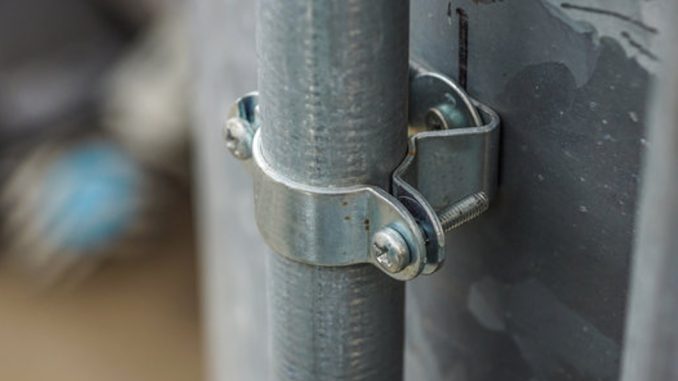
Pipe clamps are used to support lines suspended from above and fix in place a pipe from below via bolting, hanging or welding.
They help with dead weight loads, restrain pipework and remove stresses which could cause fractures or leakages requiring pipe repair.
Because pipe clamps have such varied purposes, there are many different types manufactured for specific applications based on factors such as temperature, diameter and material.
Here are of the most common types of pipe support clamps, how they work and what they are used for.
U-Bolt
Where better to start than with one of the most commonly used pipe support clamps around? Contrary to popular belief, it is not named after Usain Bolt but rather because the support itself is U-shaped.
U-Bolts are used to rest, guide and clamp in place smaller pipes below 200mm in diameter. Any pipe sized above this will carry too much load for a U-Bolt – the horizontal force has to be comparatively small with the vertical load.
Pipe clip
Pipe clips are also known as pipe straps. They are one of the most straight forward types of support clamps to use, bolting a pipe directly to an existing structure.
All a pipe clip requires is a couple of screws drilled through the ends of the U-shape strap. They can attach both horizontal and vertical lines.
Two-Bolt Pipe Clamp
Two-Bolt Pipe Clamps consist of two U-shaped pieces which are tightened around a pipe requiring support using two bolts.
They are used for hanging horizontal lines carrying relatively light loads and with little to no insulation surrounding the pipe.
Three-Bolt Pipe Clamp
No prizes for guessing that the Three-Bolt Pipe Clamp features three bolts rather than two. The extra bolt is found at the top of the clamp, where the length of the support is increased.
This enables a Three-Bolt Clamp to be applied to a line with thick insulation for the purpose of carrying high temperature fluids, by attaching outside the insulation. The load carrying ability of a Three-Bolt Clamp is also higher than a Two-Bolt Clamp.
York-Type Clamp
The York-Type Clamp is used to suspend high-temperature horizontal lines with insulation between 100mm and 150mm in diameter.
It features a U-shaped bracket attached to a partial saddle joint which is then fixed to a beam or ceiling above.
Riser Pipe Clamp
Riser Pipe Clamps are used to support vertical lines without the need for hanger rods. They feature long ears either side of the clamp which transfer pipe load.
This transfer is achieved by resting the ears on a structural member or floor surface. Riser Clamps cannot be used with high temperature lines.
Adjustable Swivel Ring
The Adjustable Swivel Ring is a split-type support clamp used to suspend non-insulated pipelines which could have taken its inspiration from Captain Hook’s missing hand.
Rather than being bolted around a pipe, it features a hook element on a hinge which locks in place. This prevents loosening by vibration and maintains the proper pitch of the line.
Centre Beam Clamp
Centre Beam Clamps are designed for suspending pipes from the centre of an I-beam located above, a common installation technique for pipelines operating in environments such as combined heat and power systems.
A Centre Beam Clamp is attached to the bottom flange of the I-beam. It then has a hanger rod suspended from it. It helps to prevent distortion.
Adjustable Pipe Clamp
The most cost-effective pipe support clamp around is the Adjustable Pipe Clamp. Mostly made from steel, plastic or aluminium, it does exactly what it says on the tin – adjusts to any diameter.
Adjustable Clamps can be easily loosened and tightened to fit around an outside diameter, meaning that they can be repurposed to fit many different pipes rather only being suitable for one size.
Cushioned Pipe Clamp
One problem which clamps can cause is galvanic corrosion through metal-to-metal contact between a pipeline and the support.
Cushioned Pipe Clamps avoid this problem by having the clamp covered in a cushioning material to reduce interaction. They are widely used on bare pipes.

Leave a Reply